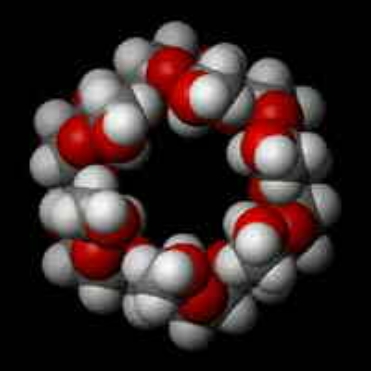What is Cyclodextrin?
Cyclodextrin
Cyclodextrins (CDs) are cyclic and non-reducing alpha-1,4-maltooligosaccharides consisting of six or more of D-(+)-glucopyranose units. Among them, the members composed of six (alpha-CD), seven (beta-CD), and eight (gamma-CD) D-(+)-glucopyranose units are most popular and larger CDs have been isolated.
CDs are formed enzymatically from starch by the action of cyclodextrin glycosyltransferase (EC.3.2.1.19) produced from certain microorganisms.
CD is cyclic oligosaccharide shaped like a truncated cone as shown below and has a hydrophobic cavity in center.


Where are CDs used?
CDs are used in many fields, such as Foods, Cosmetics, Toiletries, Agrochemicals, and Pharmaceuticals.
Cyclodextrin Chemistry is now one of important fields of Supramolecular Chemistry.
With their characteristic molecular structures, CDs are capable of forming inclusion complexes with various organic compounds by incorporating them into the CD cavities.
Since these CDs change the physical and chemical properties of incorporated guest compounds, the following general applications of CDs are suggested by many investigators.
- Protection of materials against oxidation and UV-degradation during storage or processing.
- Stabilization of flavors and spices.
- Masking of bitterness and unpleasant odor of food and drug.
- Conversion of liquid materials to dry form.
- Improve of solubility of materials with low solubility in water.
- Emulsification of hydrocarbons, steroids, fats, and fatty acids.
- Controlled release of drugs and flavors.
- Catalyst for chemical reaction.
- Constrained medium for chemical synthesis.
- Mobile phase additive and stationary phase component for HPLC or TLC.
